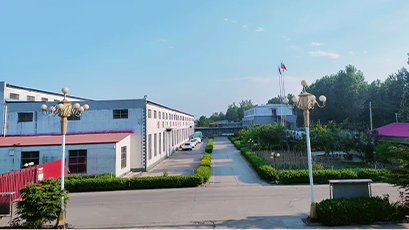
-
 Afrikaans
Afrikaans -
 Albanian
Albanian -
 Amharic
Amharic -
 Arabic
Arabic -
 Armenian
Armenian -
 Azerbaijani
Azerbaijani -
 Basque
Basque -
 Belarusian
Belarusian -
 Bengali
Bengali -
 Bosnian
Bosnian -
 Bulgarian
Bulgarian -
 Catalan
Catalan -
 Cebuano
Cebuano -
 Corsican
Corsican -
 Croatian
Croatian -
 Czech
Czech -
 Danish
Danish -
 Dutch
Dutch -
 English
English -
 Esperanto
Esperanto -
 Estonian
Estonian -
 Finnish
Finnish -
 French
French -
 Frisian
Frisian -
 Galician
Galician -
 Georgian
Georgian -
 German
German -
 Greek
Greek -
 Gujarati
Gujarati -
 Haitian Creole
Haitian Creole -
 hausa
hausa -
 hawaiian
hawaiian -
 Hebrew
Hebrew -
 Hindi
Hindi -
 Miao
Miao -
 Hungarian
Hungarian -
 Icelandic
Icelandic -
 igbo
igbo -
 Indonesian
Indonesian -
 irish
irish -
 Italian
Italian -
 Japanese
Japanese -
 Javanese
Javanese -
 Kannada
Kannada -
 kazakh
kazakh -
 Khmer
Khmer -
 Rwandese
Rwandese -
 Korean
Korean -
 Kurdish
Kurdish -
 Kyrgyz
Kyrgyz -
 Lao
Lao -
 Latin
Latin -
 Latvian
Latvian -
 Lithuanian
Lithuanian -
 Luxembourgish
Luxembourgish -
 Macedonian
Macedonian -
 Malgashi
Malgashi -
 Malay
Malay -
 Malayalam
Malayalam -
 Maltese
Maltese -
 Maori
Maori -
 Marathi
Marathi -
 Mongolian
Mongolian -
 Myanmar
Myanmar -
 Nepali
Nepali -
 Norwegian
Norwegian -
 Norwegian
Norwegian -
 Occitan
Occitan -
 Pashto
Pashto -
 Persian
Persian -
 Polish
Polish -
 Portuguese
Portuguese -
 Punjabi
Punjabi -
 Romanian
Romanian -
 Russian
Russian -
 Samoan
Samoan -
 Scottish Gaelic
Scottish Gaelic -
 Serbian
Serbian -
 Sesotho
Sesotho -
 Shona
Shona -
 Sindhi
Sindhi -
 Sinhala
Sinhala -
 Slovak
Slovak -
 Slovenian
Slovenian -
 Somali
Somali -
 Spanish
Spanish -
 Sundanese
Sundanese -
 Swahili
Swahili -
 Swedish
Swedish -
 Tagalog
Tagalog -
 Tajik
Tajik -
 Tamil
Tamil -
 Tatar
Tatar -
 Telugu
Telugu -
 Thai
Thai -
 Turkish
Turkish -
 Turkmen
Turkmen -
 Ukrainian
Ukrainian -
 Urdu
Urdu -
 Uighur
Uighur -
 Uzbek
Uzbek -
 Vietnamese
Vietnamese -
 Welsh
Welsh -
 Bantu
Bantu -
 Yiddish
Yiddish -
 Yoruba
Yoruba -
 Zulu
Zulu
Understanding Drum Brake Fade and Its Effects on Vehicle Performance
Understanding Drum Brake Fade Causes and Solutions
Drum brakes have been a staple in automotive design for decades, primarily due to their cost-effectiveness and sufficient stopping power for many vehicles. However, one significant drawback of drum brakes is the phenomenon known as brake fade. Understanding drum brake fade is essential for both vehicle safety and maintenance.
What is Drum Brake Fade?
Drum brake fade refers to the reduction in stopping power that occurs when the brakes are subjected to prolonged or excessive use. This phenomenon is primarily caused by overheating, which can lead to a decrease in the friction generated between the brake shoes and the drum. As temperatures rise, the materials that make up the braking system begin to deteriorate, which ultimately results in reduced braking efficiency.
Causes of Brake Fade
1. Heat Generation Whenever you apply the brakes, kinetic energy is converted into thermal energy. In continuous or aggressive braking scenarios—such as driving downhill or in racing situations—this heat builds up. The braking system is not equipped to dissipate this heat quickly enough, leading to overheating.
2. Material Properties Most drum brakes consist of cast iron or aluminum drums and friction materials made from organic compounds or metallic blends. Over time and with high temperatures, these materials can begin to lose their effectiveness. For instance, certain organic pads can wear down rapidly under heat, resulting in a higher likelihood of fade.
3. Moisture When moisture enters the braking system—be it from rain, humidity, or washing the vehicle—it can create a layer between the brake shoes and the drum, inhibiting effective contact. This wet condition can also cause rust, which further impairs system efficiency.
4. Design Factors The inherent design of the drum brake system can contribute to brake fade. Drum brakes are more prone to heat retention compared to disc brakes, as they encase the friction material and trap heat, preventing effective cooling.
Symptoms of Brake Fade
Identifying brake fade early is crucial. Drivers may notice several symptoms indicating an issue with drum brakes
drum brake fade

- Longer Stopping Distances The most apparent sign of fade is an increased distance required to stop the vehicle.
- Pedal Feel Changes A spongy or unusually stiff brake pedal can indicate that the brakes are not engaging effectively due to overheating or fluid vaporization.
- Noise Squealing, grinding, or any new sounds when applying the brakes can signify problems, including potential deterioration of brake components.
Preventing Brake Fade
Preventive measures to avoid drum brake fade primarily center around maintenance and mindful driving habits
1. Regular Inspections Routine checks of the brake system are essential. Inspect brake shoes, drums, and hydraulic fluids, ensuring they are in good condition.
2. Cooling Techniques For drivers who frequently heat up their brakes through aggressive driving or long downhill stretches, consider using engine braking techniques. This method can help manage speeds without relying solely on brakes and generate less heat.
3. Upgrading Components In high-performance or heavy vehicles, consider upgrading to high-performance brake shoes or switching to disc brakes, which generally offer better heat dissipation and less susceptibility to fade.
4. Driving Practices Avoid riding the brakes and using steady pressure instead of repeated hard braking during lengthy descents.
In conclusion, understanding drum brake fade is critical for both everyday drivers and automotive enthusiasts alike. By recognizing the causes, symptoms, and preventative measures, drivers can maintain brake efficacy and ensure a safer driving experience. Proper care and respect for the limits of the braking system will go a long way in maintaining optimal performance on the road.
-
What Are Drum BrakesNewsJul.07,2025
-
Understanding Brake Drum MaterialNewsJul.07,2025
-
Semi-Trailer Brake Drum: A Key Component for Extreme Loads and Long-Distance TransportNewsJul.07,2025
-
Drum Brake Pads for SaleNewsJul.07,2025
-
Brake Drums for SaleNewsJul.07,2025
-
Brake Drum ManufacturerNewsJul.07,2025
-
Aluminum Brake Drums: The Future of High-Performance CarsNewsJul.07,2025
